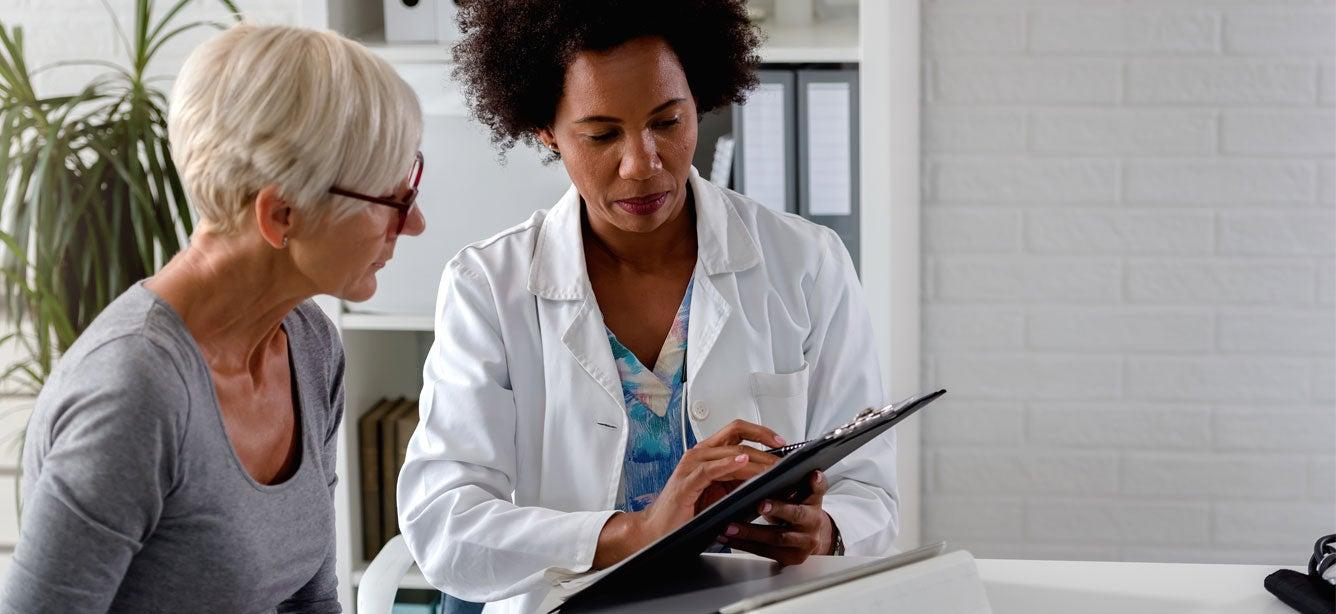What Is Osteoarthritis? What Older Adults Should Know
6 min read

Related Topics
Do you have pain in your knees, hips, hands, or feet? Are your joints stiff for several minutes when you first get up in the morning or after you’ve been sitting for a long time? Have you noticed mild swelling or tenderness in one or more of your joints? These are some of the frequent symptoms of osteoarthritis.
Arthritis means “inflammation in a joint.” There are more than 100 types of arthritis, but osteoarthritis, or OA, is the most common type, affecting 1 in 7—or 32.5 million—U.S. adults.1 OA can occur in any joint, but it is most commonly found in the knees, hips, hands, feet, and spine.
OA affects all tissues of the joint. This includes cartilage (the tissue that covers the ends of bones) the bones themselves, and surrounding tissues like the joint lining, tendons, ligaments, and muscles. Damage to these tissues causes pain, swelling, and reduced movement in the joint.
What causes Osteoarthritis?
While we don’t know all the causes of osteoarthritis, there are several factors that can increase your risk of developing OA:
- Being female
- Being older than 45
- A prior injury in the joint
- Family history of OA
- Being overweight
- Participating in sports or a job that involves repetitive or excessive joint stress
Do I need to see a doctor if I have joint pain?
While osteoarthritis is common, you should not just have to live with the pain and other symptoms. Talk with your doctor about your symptoms: be specific about what you are experiencing and your treatment goals. Primary care providers can help diagnose OA and distinguish between other musculoskeletal conditions, help you establish pain management strategies, and refer you to other specialists as needed. If left unmanaged or if you wait too long, osteoarthritis can get worse and can interfere with your ability to do daily activities, work, or hobbies.
How is osteoarthritis diagnosed?
Osteoarthritis can be diagnosed by a health care provider using three main types of information:
- Your symptoms and health history—what type of symptoms you are experiencing, how long you’ve had the symptoms, how long they last, and how your daily activities are affected. A list of your other health conditions could be important, too.
- A physical exam—A provider might watch you walk, bend down, or stand up from a chair; they might ask you to bend your affected to joint to see or feel how well it moves; they will also evaluate whether the joint is tender, swollen, or red.
- Imaging—While imaging is generally not needed to diagnose OA, X-rays are the most common type of imaging used to rule out other causes of joint pain.
What is the difference between osteoarthritis and rheumatoid arthritis?
Rheumatoid arthritis (RA) is an autoimmune disease in which the body’s immune system attacks the tissues, including joints and other organs such as lungs, heart, eyes, and muscles. Osteoarthritis only affects the joints.
Both types of arthritis can cause pain, stiffness and reduced range of motion in the joints. RA can also cause fatigue, muscle aches, and loss of appetite. RA tends to be symmetrical, resulting in symptoms in the same joints on both sides of the body. In OA, it is not uncommon to have pain in a joint on one side and not the other. The pattern of joints involved also differs between RA and OA.
Is osteoarthritis unavoidable as I get older?
The risk of osteoarthritis does increase as you get older, but there are many things you can do to lower your risk or slow the progression of OA. These include exercise, maintaining a healthy weight, using joint protection strategies to avoid (or recover) from injuries, and working with your doctor to set up an OA prevention or management strategy.
How is osteoarthritis treated?
While there is currently no cure for osteoarthritis, a number of treatments can help ease symptoms. Each person responds differently to these treatment options, so you may need to try several methods (or a combination of methods) to help you manage your OA symptoms. Check with your doctor to see what might be right for you.
- Physical activity is one of the best treatments for osteoarthritis. Physical activity can help improve pain, mood, and your ability to do everyday activities. It can also help you manage your weight. Aim for a combination of aerobic, strengthening, and flexibility exercises. Even just moving more throughout the day can help!
- Weight management is the key to preventing AND managing osteoarthritis. Extra weight increases joint pain and damages cartilage of the joints, especially in the hips and knees. Even small amounts of weight loss may help relieve pain. Every 1 pound of weight loss gives you 4 pounds of relief on your knees.
- Self-management education includes a variety of programs, usually held in the community like at a local YMCA or senior center, that help adults with a chronic condition (such as OA) learn how to manage it, prevent its short- and long-term health consequences, and achieve the best possible quality of life.
- Physical and occupational therapy can improve your movement, strength, endurance, balance, and function and help you better manage everyday tasks.
- Assistive devices such as braces and canes may improve pain, joint stability, and balance and can help lower your risk of a fall.
- Mind-body strategies include tai chi, yoga, acupuncture, heat and cold treatments, braces, and canes, and one-on-one or group counseling.
- Medications can help reduce pain and inflammation. Some pain medications are taken by mouth, while others can be rubbed into the skin over the affected joint or injected into the joint.
Is surgery the only option for osteoarthritis?
Joint replacement surgery is usually saved as a last resort, after many other types of treatments have been tried and are no longer working.
Can I exercise if I have osteoarthritis?
While you might be worried that exercise will increase joint pain from osteoarthritis, the opposite is actually true! Over time, physical activity can help reduce joint pain and stiffness and improve range of motion. Exercise helps lubricate the joints and strengthen muscles around the joints.
Walking, swimming, biking, tai chi, and yoga are great low-impact options. It is not uncommon to have some pain or stiffness when increasing your physical activity; however, remember the two-hour rule: if you are still experiencing pain two hours after you finish exercising, then you might have overdone it! Try reducing the intensity of activity, try shorter “bursts” of activity, or try a different type of exercise.
For more resources on osteoarthritis, visit the OA Action Alliance website.
Source
1. United States Bone and Joint Initiative. The Burden of Musculoskeletal Diseases in the United States. Fourth Edition. 2018. Found on the internet at https://www.boneandjointburden.org/fourth-edition




